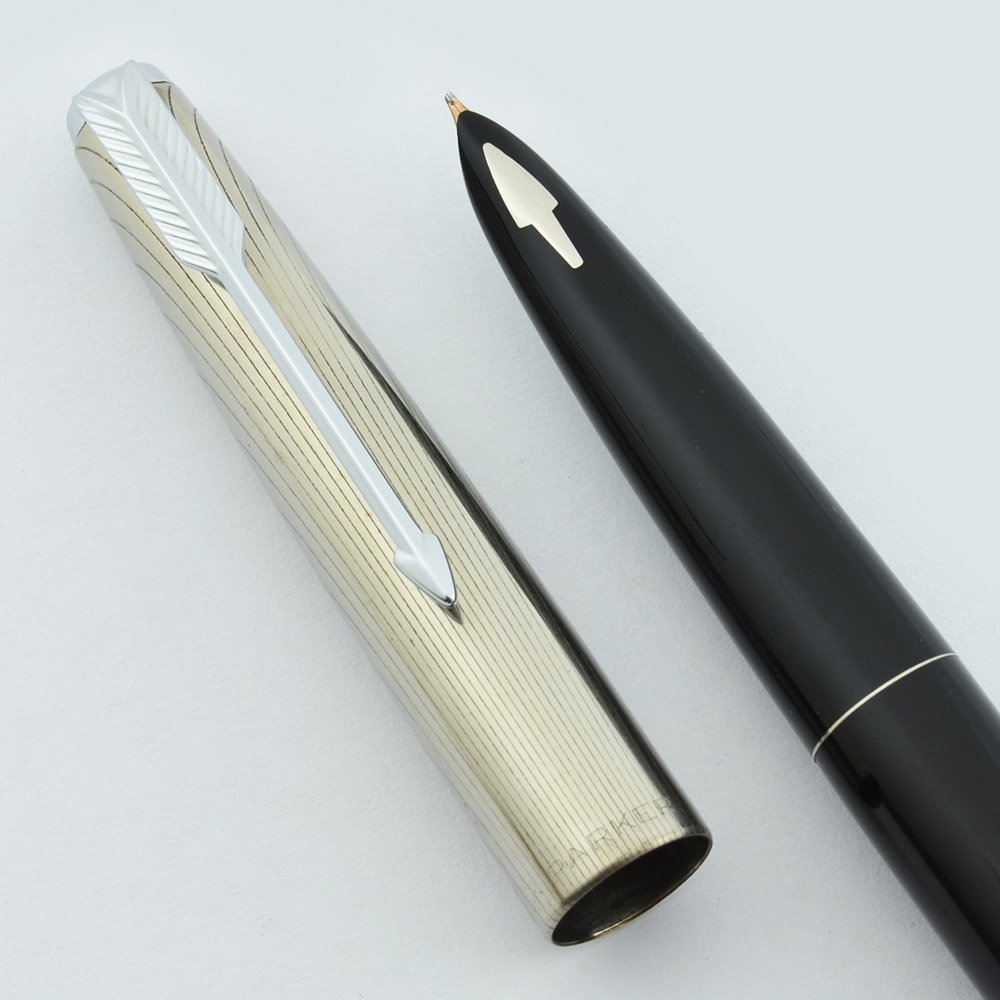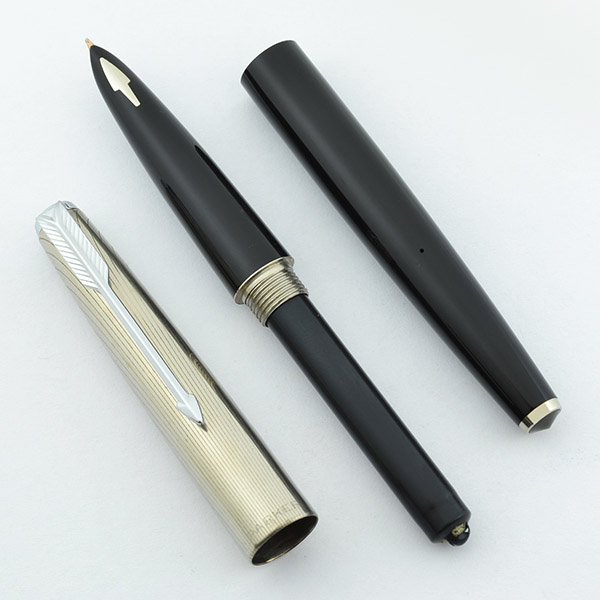Product Description
Type Fountain pen with unique filling system
Product Name Parker 61, Mark I
Manufacturer and Year Parker, USA, circa 1957 (that was when the Legacy cap first was issued).
Length 5-1/2"
Filling System Capillary filling system which is unique to this model. See further details below.
Color Black with "Rainbow" cap of nickel and silver arching "rainbow" swirls.
Nib FINE 14k nib is smooth, with good tipping material. Veyr smooth.
Condition Near mint condition. There are a few light marks of tarnish on the side of the cap which we didn't want to polish too vigorously, but other than that it is perfect. No cracks or chips or dents. We cleaned and tested the filling system with water only, and got good flow to the tip. This pen may not have ever been inked, we couldn't find any indication of ink. (PLEASE NOTE: If you decide to ink the pen, and then decide to return it, we will only refund 80% of the price.) You'll need to be patient when you fill it the first time, as it takes a few minutes for the capillary system to draw in enough ink to get started the first time.
A word or two about the Parker 61 Capillary Filling System. If you are not familiar with this unique design, you should read this.
Here is how you fill a Parker 61, and an insight into how the pen actually works. Unscrew the barrel and stick the back end of the pen (aka the capillary cell) into a bottle of ink. Wait a few minutes (probably more like a half hour when you first start one of these older used ones), and let the ink wick up into the capillary cell. The cell contains a sheet of perforated plastic that has been given a 3-D pattern resembling tire tread, and rolled up. The perforations allow ink to seep between the rolled-up layers, and the tread pattern maintains space between the layers. In the middle of this tube, which runs the entire length of the capillary cell, is the feed. To keep things clean, the capillary cell has on a coating of teflonon the outside that is intended to shed ink as the user withdraws the pen from the ink bottle, leaving very little ink to be wiped off. The end of the barrel contains a spring-loaded thingey which covers the open end of the capillary tube, but still allows it to vent.









